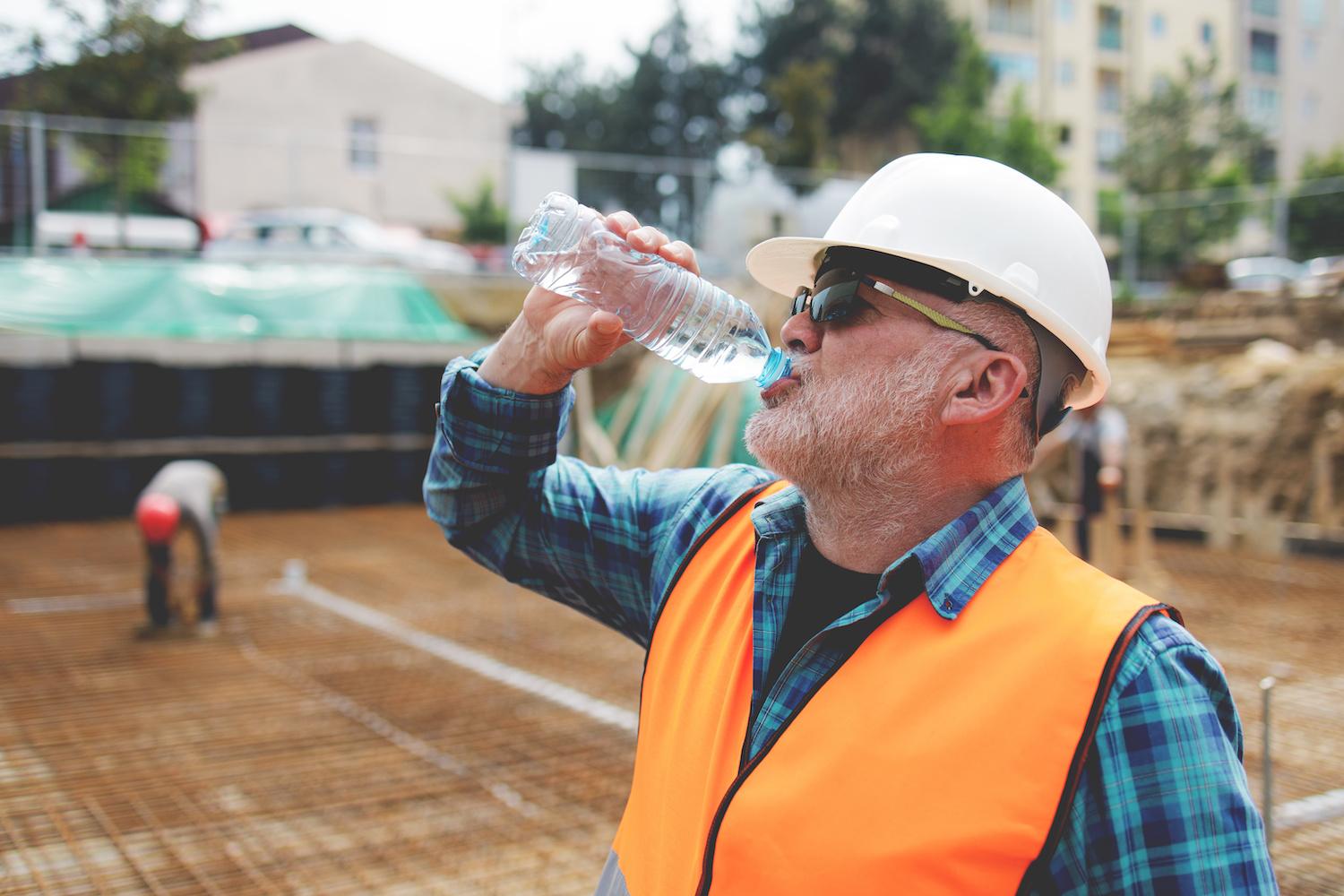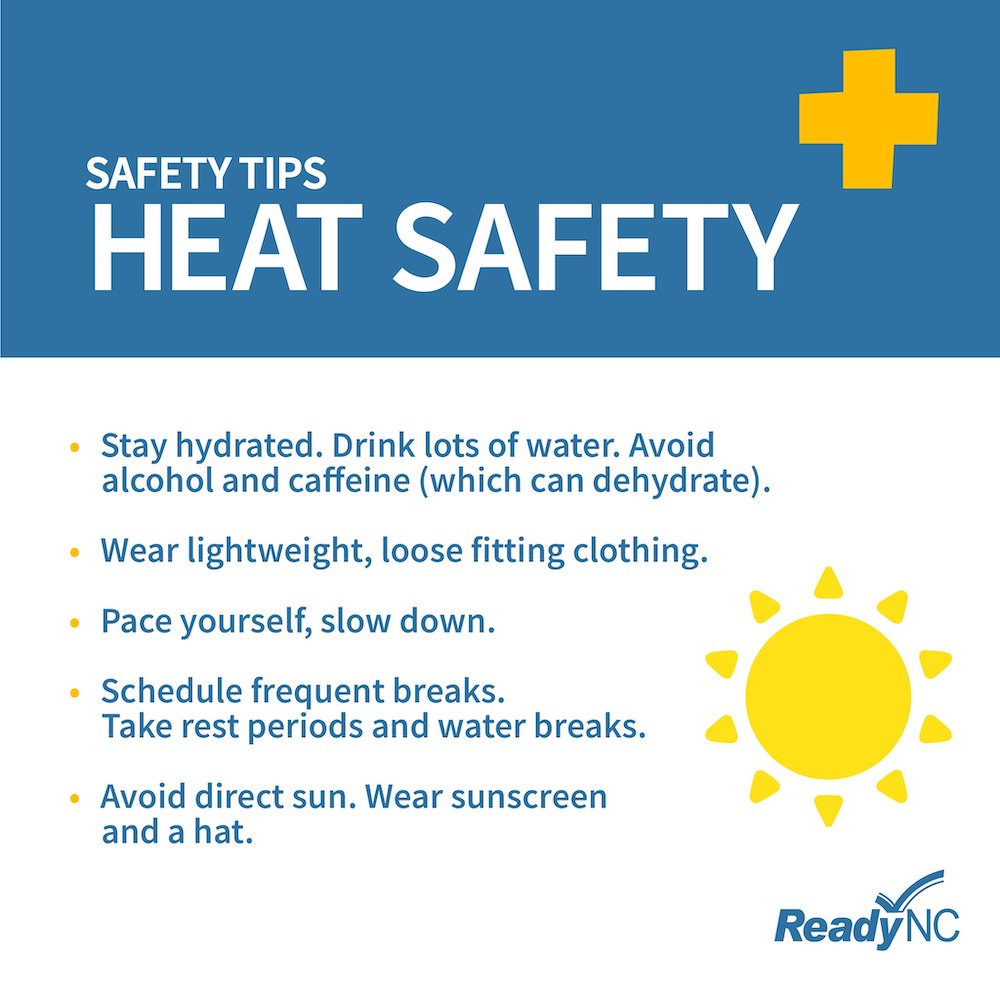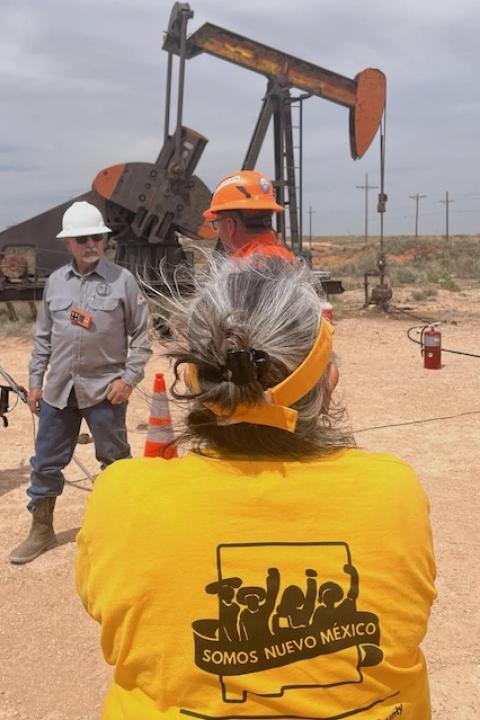
(Image: romul014/Adobe Stock)
A summer of prolonged heat waves has renewed awareness about the danger of heat-related illness and death. Both are highly dangerous, but preventable. Refreshing some of the lessons learned during the COVID-19 pandemic can help employers ensure their workers are safe and healthy, while reducing the risk of delays or disruptions and avoiding litigation. Beyond the workplace, employers also have the power to advocate for long-term solutions that accelerate the pace of climate action, which can tamper the frequency of extreme weather events.
Heat is a killer, but a preventable one
All deaths attributed to extreme heat are preventable, according to the U.S. Centers for Disease Control and Prevention (CDC). Yet about 618 people die from extreme heat in the U.S. each year.
In hot conditions, the human body stays cool by sweating, and only by sweating. “When sweating isn’t enough to help you cool down, you’re at risk for a heat-related illness called hyperthermia,” warn the U.S. National Institutes of Health.
Heat-related symptoms of stress include exhaustion, cramps and rashes. Heat stress can lead to heat stroke, a potentially lethal condition that results when a person loses the ability to sweat.
Employers need to be especially vigilant regarding employees whose bodies may have a limited ability to respond to hot conditions due to preexisting medical conditions, such as obesity and diabetes among other factors.
Teens and children may be at outsize risk for heat-related illness on the job
Employers with teenagers on their payroll also need to exercise caution. For all the benefits of an after-school job, physical exertion in hot weather is a known hazard for young people who may not know their limits or recognize the signs that something is wrong. For example, more than 9,000 high-school athletes are treated for heat-related illnesses each year, the National Institutes of Health estimates.
“Risk factors include being obese and beginning practice during hot and humid weather, when athletes are not yet acclimated to physical exertion in heat,” NIH reported last year. Heavy physical labor could pose similar risks for teen workers.
Despite the risks, several U.S. states have recently loosened child labor laws, including Arkansas, Iowa, New Hampshire and New Jersey, with others considering similar action. Meanwhile, child labor law violations have been rising since 2015, potentially putting more children at risk.

Heat wave safety: Recognize the signs and act quickly
Employers also need to watch for employees who arrive at work already stressed from a long commute, a second job, an after-school sport or a lack of air conditioning at home, among other potential risk factors. Poverty is also known to heighten risk for heat-related illness.
While heat-related workplace risks are often associated with heavy physical labor outdoors in the sun, shaded and indoor workspaces can also become unsafe. Acting quickly when an employee begins to show signs of heat stress is imperative. The Occupational Safety and Health Administration (OSHA) guidelines provide a quick refresher course on heat emergency response, available online in a quick-read poster format.
In particular, employers should be aware that the symptoms of heat stress can be confused with drug or alcohol abuse. Initial symptoms include headache, dizziness, fainting, irritability, confusion, thirst, nausea or vomiting.
Employers should call for medical assistance when an employee exhibits these symptoms and take immediate steps to help. OSHA recommends bringing the employee to a cooler area, fanning them, applying ice bags or cold towels, offering water, and removing outer clothing.
Heat stroke victims also exhibit symptoms similar to substance abuse. They may become confused and unable to think clearly. They may pass out, collapse or experience seizures. Reacting quickly with a mindset toward employee safety — rather than judging employees for behavior that appears off — can avert more serious illness.
Lessons learned during the pandemic can prevent heat-related illness
As with the COVID-19 pandemic, OSHA advises that employers establish a complete prevention program that goes into high gear during periods of increased risk.
Local health officials can advise employers about risk levels. The U.S. CDC also established an online heat-related emergency room visit tracker, which can further alert employers to heightened risks.
Along with educating individual employees on prevention, symptoms and treatment, OSHA advises employers to provide additional oversight by designating trained employees to monitor the workplace and by establishing a buddy system.
Employers that responded to the pandemic by modifying their workspaces and schedules can refresh those plans. Employers that created healthier workspaces with improved HVAC and airy break rooms can put those resources to work as cooldown areas. Assigning remote work is another option to deploy for employees who have cooling resources at home.
For physical work, OSHA also advises employers to gradually acclimatize new employees to the required level of activity. Making at least one pint of cool water per hour available near the workspace is a must, along with frequent cooldown breaks.
Employers are well advised to listen to the OSHA guidance on symptoms and cooldown strategies. On June 23, a 24-year-old construction worker died of heat stroke in Texas after reportedly exhibiting symptoms on the job including confusion, altered mental state and dizziness.

Beyond workplace safety: Advocate for climate action
Heat waves and heat-related illness have always been risk factors for businesses and the public at large. Climate change is raising those risks with increasing ferocity.
Global average temperatures increased almost every year over the past decade, with the 10 hottest years on record all occurring since 2010. The impacts are on full display this year as a seemingly endless series of extreme heat waves linger across the U.S. and around the world, leading to spikes in emergency room visits including burns from hot pavement.
All business stakeholders — investors, owners, managers and employees alike — have an existential interest in advocating for decarbonization policies that reduce the risk of climate-induced heat waves. Here are some ways they can make their voices heard.
Come together. Some business leaders are already taking action through advocacy groups like We Mean Business, a global coalition founded by seven organizations with expertise in sustainable business practices like carbon disclosure.
Bring a close eye to political spending. To go further, companies can also take a closer look at how they spend their political donations, ensuring they do not finance candidates who oppose government action against climate change.
Get out the vote — and make sure people have the time. Businesses can also support climate action candidates by ensuring their employees, customers, and clients have a free and equal opportunity to exercise their vote or to serve as poll workers. The Time to Vote campaign is one effective place to start. Those with the platform can also amplify resources that meet voters where they are, like their favorite mobile apps. Spotify, for example, encouraged voters to learn about voter registration and other resources during the 2022 midterm elections through its partner organization, HeadCount.org. SnapChat also partnered with the organization BallotReady for an in-app voter registration drive last year.
For more information and resources on preventing heat-related illnesses and heat stroke, read the CDC report, “Heat-Related Illness.”

Tina writes frequently for TriplePundit and other websites, with a focus on military, government and corporate sustainability, clean tech research and emerging energy technologies. She is a former Deputy Director of Public Affairs of the New York City Department of Environmental Protection, and author of books and articles on recycling and other conservation themes.













